Eleanor of Provence (Éléonore/Aliénor de Provence), who was Queen of England as wife of King Henry III of England, died on the 24th or 25th of June 1291 in England. She is one of the few English queens who was not buried at Fontevraud Abbey or Westminster Abbey. By the end of her life, Eleanor retired to a convent and died in Amesbury, so the exact site of her burial is unknown. Interestingly, her daughter, Beatrice of England, was born on 25th of June 1242.
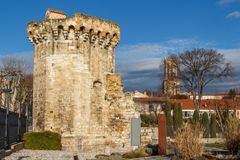
Born in Aix-en-Provence in southern France, she was the second daughter of Ramon Berenguer IV, Count of Provence, and Beatrice of Savoy. Eleanor had one elder sister – Marguerite, who married King Louis IX of France known as Saint Louis. Her two younger sisters were Sanchia of Provence, for whom Eleanor arranged a marriage to Richard, Earl of Cornwall and Henry III’s brother, and Beatrice of Provence, wife of Charles I, King of Sicily. Although Ramon Berenguer had no male heir as his wife had birthed only one stillborn son, all of his daughters married kings, even though Richard of Cornwall’s title of King of the Romans never held much significance, and Richard visited Germany only four times.
King Henry III of England was a bachelor at his 28-29, and it was high time for him to produce an heir to the throne. He considered a few potential brides in his youth, but they all proved unreasonable from the political standpoint. After William of Savoy, a bishop from the House of Savoy, had successfully arranged Marguerite’s union with the King of France, he endeavored to marry Eleanor to another monarch and eventually succeeded. Eleanor came to England in 1236, and William, who accompanied her, was made Head of his council of advisors.
Henry III and Eleanor were married at Canterbury Cathedral in January 1236. According to contemporary sources, young Eleanor, who was only 12 at the time, was clad in a glittering golden dress that fitted tightly at the waist and flared out to wide pleats at her feet, its long sleeves trimmed with ermine. The southern girls of Provence and Beatrice of Savoy, their mother, were renowned for their beauty. With her lovely features, her long, glossy, dark hair, and her fine eyes, Eleanor must have charmed the King of England right from the start. She was crowned soon afterwards. Perhaps they didn’t consummate their matrimony straight away due to Eleanor’s youth, for the couple’s first child, the future King Edward I of England, was born only in 1239.
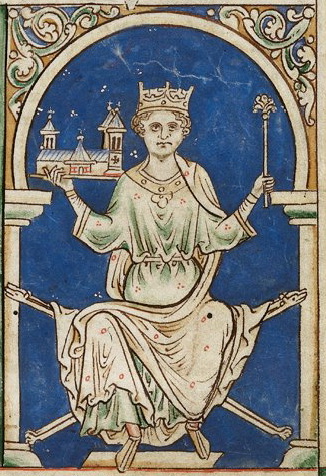
Despite their age gap, Eleanor and Henry were genuinely devoted to each other. She seems to have been pregnant 8 or 9 times. Her first four children (Edward, Margaret, Beatrice, and Edmund) survived into adulthood. Eleanor possibly had 4 other sons who also died in childhood, but their birth is in doubt as there is no contemporary record of this. Eleanor and Henry were renowned for their happy marriage and their affectionate relationships with their children. Perhaps Henry was a mediocre ruler for his subjects, but he was a good man in love with his wife and a caring father. Edward, Eleanor’s eldest son, was devoted to his mother as long as she was alive. Eleanor retained close relationships with her daughters even after their marriages.
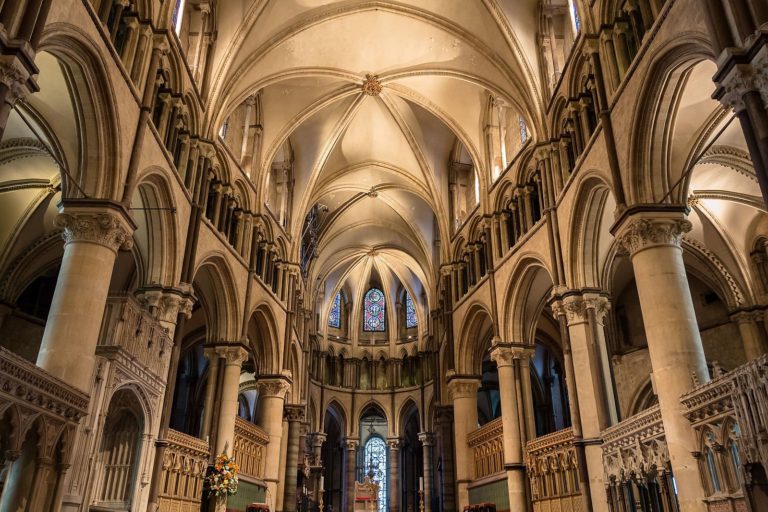
The couple’s youngest daughter, Catherine, was born with a disability in 1253. We don’t know for a certainty what kind of illness the girl suffered from, but her parents both gave generous gifts to the church to pray for her health. After their daughter passed away in 1257, Henry and Eleanor provided her with a fine memorial. This tragedy must have made Eleanor more determined to advance her remaining children. Later in life, Eleanor decided that her second son, Edmund, could become the King of Sicily following the death of Emperor Frederick II in 1250, and the Pope supported Edmund. Yet, it all ended in a fiasco when Sicily was occupied by Conrad’s illegitimate brother.
After the “disgrace” of Isabella d’Angoulême, mother of Henry III, the people of England either had high expectations of their next queen, or they disliked French and any foreign women. Their dislike of Eleanor of Provence is explained by her foreign birth, and by the fact that her relatives flooded England after her wedding to Henry. Indeed, the presence of her penniless Savoyard and Provençal relative at the Plantagenet court irritated English magnates, and the populace loathed her for the same reason. The roots of their hostility could be clear to Eleanor, but she allowed this to unfold. One of the explanations might be that the Savoyards protected Eleanor’s interests and ensured that the Lusignans – Henry’s half-siblings living in England – didn’t become too powerful. Moreover, Eleanor must have felt natural to promote her relatives thanks to their filial bonds. Unfortunately, she also lived in the time when all of the English former continental territories were lost. King John was responsible for that, but his son, Henry, and his foreign wife were also blamed for these misfortunes, especially following the revolts in Gascony.
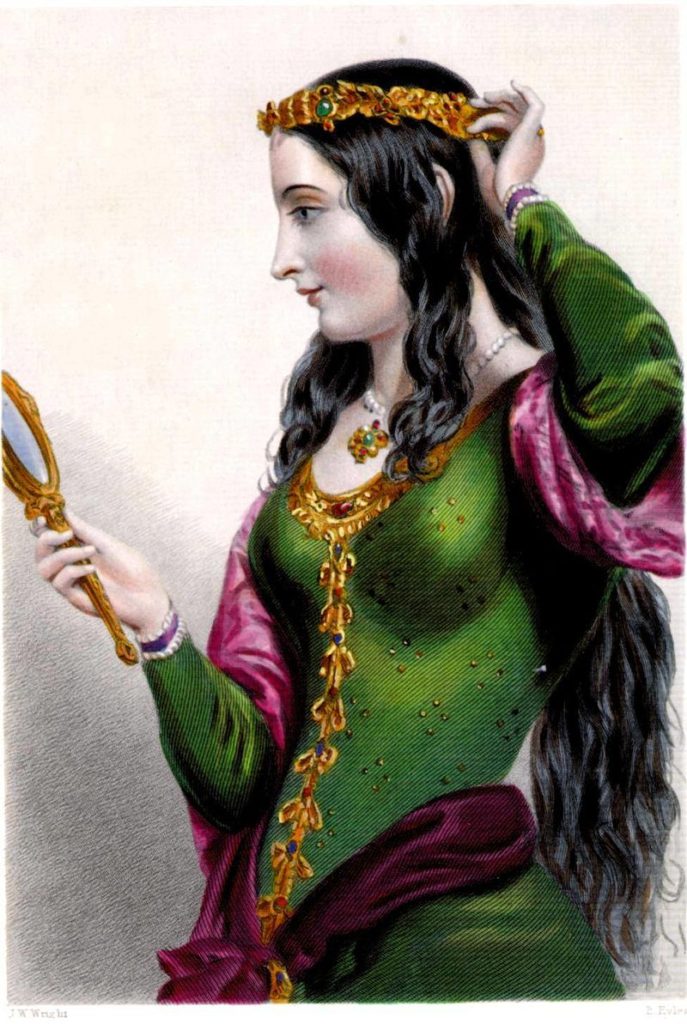
By 1258, the magnates of the English realm were completely fed up. The lords wanted both the Savoyards and the Lusignans out of England. Eleanor loved Henry and, thus, tolerated his Lusignan half-siblings for years. In the spring of 1258, a group of lords, led by Simon de Montfort who was married to Princess Eleanor, Henry’s sister, launched a coup to oust the foreigners from court. Afraid that he would be deposed, Henry consented to rule through a council consisting of nominees selected by the barons and his own picks – Lusignans. Parliament enacted the Provisions of Oxford that asserted the right of the barons to representation in the government and, like the Magna Carta, allowed the lords to express their frustrations with the monarchy. In addition, the Provisions of Westminster of 1259 further limited the king’s authority.
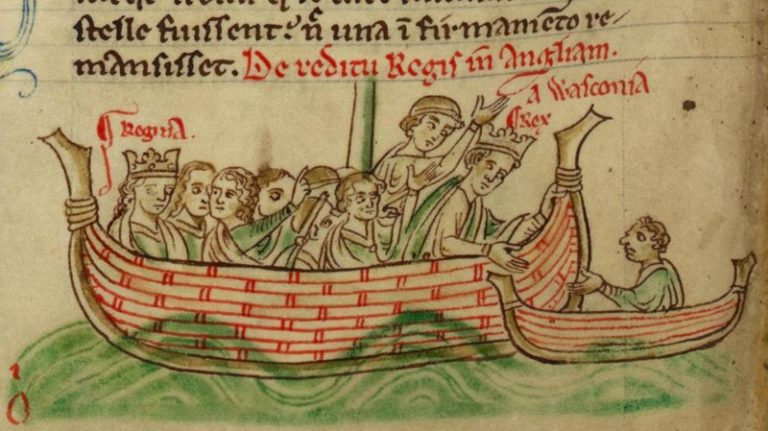
Henry and Eleanor left for France in 1259 to solidify the Treaty of Paris with King Louis IX, returning in the spring of 1260. Simon was put on trial but remained alive. Later, an offended Henry announced that Rome had freed him from the promises he had made before, and that he would not abide by the Provisions. As a result, in 1264, the Second Barons’ War started, led by Simon de Montfort. For 15 months, the country was ravaged by civil war until the Battle of Evesham in August 1265, which was won by Prince Edward, whose men killed Simon. The royal army crushed the rest of the rebels at the Battle of Chesterfield in May 1266.
Henry trusted Eleanor to make his wife regent of England during his absence in Gascony in 1253. During the Second Barons’ War, Eleanor backed her husband’s cause and struggled with Simon, even raising troops in France for Henry. Sometimes, the spouses supported different factions, but overall they lived in harmony and reconciled after arguments. Despite the above, the hostility towards her was widespread. In 1263, when Eleanor was sailing down the Thames, her barge was attacked by citizens of London who threw stones into her and her guards, insulting her. The queen was freed with difficulty by the Mayor of London and retirned to the Tower. It was when she realized how unpopular she was! No English queen either before or after her was attacked by a mob! It must have been utterly humiliating, but Eleanor had to swallow it.
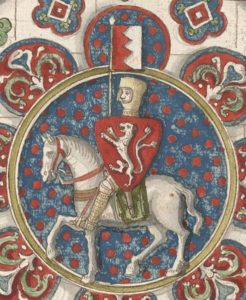
Eleanor can really be admired for her intelligence, her splendid education, and her talent at writing poetry. Her southern French soul, must have been a romantic one. She adored the songs of troubadours since childhood and continued this interest in adulthood, perhaps introducing some Provencal music to England. She purchased numerous romantic and historical books, covering stories from ancient times to romances written in the 13th century. The queen was also a fashion icon who adored and imported French garments. Her parti-coloured cottes (this is a type of tunic) and her gold or silver girdles were her hallmarks. Eleanor loved red and crimson colors and preferred to cover her dark hair with jaunty pillbox caps. A new type of wimple was brought to England by her, in which a woman’s face looked like a flower in an enveloping spathe.
Eleanor of Provence was by Henry III’s bedside when he died at Westminster in 1272. At the time, his heir, King Edward I of England, participated in the Eighth Crusade, led by Louis IX of France. Edward returned to England via Gascony, arriving in 1274 and soon being crowned together with his wife, Eleanor of Castile. Most of the influence was now left to her Castilian daughter-in-law, the Queen Dowager devoted her remaining years to caring for her grandchildren. Eleanor of Provence lived at the nunnery of Amesbury, eight miles north of Salisbury, for most of the time after 1276; in 1287, she became a nun and died there in 1291.
All images are in the public domain.
Text © 2020 Olivia Longueville

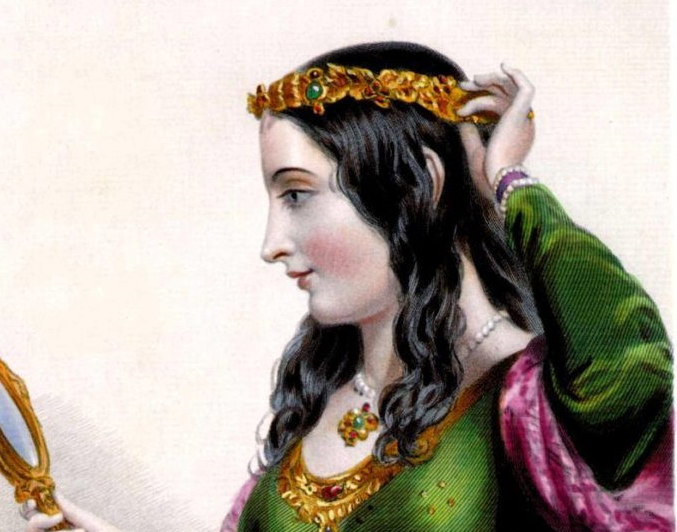
Eleanor of Provence was a wonderful woman. Henry the Third loved her and she was a forunate wife and Queen for her son, Edward the First who loved his first wife, Eleanor of Castile would not do for Eleanor of Castile what Henry the Third did for Eleanor of Provence.
Thank you for your comment! I am so glad you like the article. I agree that Eleanor of Castile, Edward I’s first wife, would not do for her children even an ounce of what Eleanor of Provence did for her children. Eleanor of Castile had an emotionally aloof personality and was not close to her kids, although many of them did not live into adulthood.